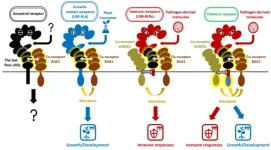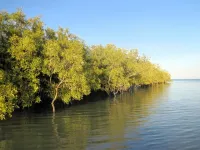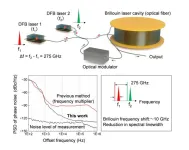The risk of a heart attack among adults after a clot-caused stroke or a stroke plus a tear in the wall of a neck artery (carotid or vertebral artery dissection) was almost double within the first year compared to the heart attack risk for people who did not have a stroke but were hospitalized with medical events. The medical events included some overlapping symptoms, such as “warning stroke,” migraine or transient global amnesia. However, people with a carotid artery or vertebral artery dissection but no stroke were not significantly more likely to have a heart attack than those with a warning stroke, migraine or amnesia. Embargoed until 4 a.m. CT/5 a.m. ET, Thursday, Feb. 1, 2024
DALLAS, Feb. 1, 2024 — Heart attack risk almost doubles in the first year after a stroke or when combined with a tear in a neck artery wall, however, a tear without a stroke does not seem to raise heart attack risk, according to preliminary research to be presented at the American Stroke Association’s International Stroke Conference 2024. The meeting will be held in Phoenix, Feb. 7-9, and is a world premier meeting for researchers and clinicians dedicated to the science of stroke and brain health.
“Our findings may aid physicians in assessing and managing cardiovascular risk after these events,” said Liqi Shu, M.D., clinical fellow in neurology at the Warren Alpert Medical School of Brown University in Providence, Rhode Island.
Aortic dissection is a tear in the wall of the aorta, the large artery that receives blood directly from the heart, and is known to increase heart attack risk. Tears in the walls of the carotid or vertebral arteries, which extend out from the aorta and carry blood through the neck to the brain, are called carotid or vertebral artery dissections. These dissections can result in stroke, and stroke is known to be associated with heart attack. It was unclear whether carotid or vertebral artery dissection itself increases heart attack risk prior to this study.
The researchers analyzed health information for more than 800,000 adults (average age of 63 years; 62% women) hospitalized in New York (between 2011 and 2017) or Florida (between 2011-2019). The patients with no history of recent major head or neck trauma were separated into four groups based on diagnoses: acute ischemic stroke; cervical artery dissection; both; or a reference group of patients with transient ischemic attack known as a “warning stroke,” temporary loss of short-term memory (transient global amnesia) or migraine.
After adjusting for heart attack risk factors, the study found:
Patients who had carotid or vertebral artery dissection without stroke had the same risk of having a heart attack within a year as those in the reference group. Patients with stroke, either with or without carotid or vertebral artery dissection, were almost twice as likely to have a heart attack within a year, in comparison to patients in the reference group. “Before, it was just a guess, but now we know that carotid or vertebral artery dissection not causing a stroke does not raise the risk of a heart attack, and it makes sense that clinicians should focus predominantly on stroke prevention in this subgroup of patients,” Shu said.
Study background:
Participants with a recent history of major head or neck trauma were excluded. Head or neck trauma may lead to traumatic carotid dissection, which is different from this study’s focus on spontaneous dissection. The analysis controlled for several heart attack risk factors, including age, Type 1 or Type 2 diabetes, heart failure, coronary artery disease, high cholesterol and high blood pressure. Almost 20,000 of the participants experienced a heart attack within one year of their initial hospitalization, and the risk of heart attack was compared among the diagnostic groups. Among the study group of 823,634 participants, 65.4% were white, 16.2% were Black or African American, and 12.2% were Hispanic or Latino adults. While this study is based on hospitalization data only in New York and Florida, it's important to note that these states collectively represent a substantial portion of the U.S. population, accounting for over 10% of the total. These two states also provide a good representation of diverse demographic groups, adding strength to the findings. However, caution should still be exercised when generalizing these results to people living in other geographic areas. In addition, this retrospective analysis (looks back in time to analyze data) might not have accounted for all factors influencing heart attack risk such as medication usage, which was not included in the databases.
According to the American Heart Association’s Heart Disease and Stroke Statistics 2024 Update, stroke accounted for approximately 1 of every 21 deaths in the United States in 2021.
Co-authors, disclosures and funding sources are listed in the abstract.
Statements and conclusions of studies that are presented at the American Heart Association’s scientific meetings are solely those of the study authors and do not necessarily reflect the Association’s policy or position. The Association makes no representation or guarantee as to their accuracy or reliability. Abstracts presented at the Association’s scientific meetings are not peer-reviewed, rather, they are curated by independent review panels and are considered based on the potential to add to the diversity of scientific issues and views discussed at the meeting. The findings are considered preliminary until published as a full manuscript in a peer-reviewed scientific journal.
The Association receives funding primarily from individuals; foundations and corporations (including pharmaceutical, device manufacturers and other companies) also make donations and fund specific Association programs and events. The Association has strict policies to prevent these relationships from influencing the science content. Revenues from pharmaceutical and biotech companies, device manufacturers and health insurance providers and the Association’s overall financial information are available here.
Additional Resources:
Multimedia is available on the right column of the release link https://newsroom.heart.org/news/stroke-or-stroke-plus-neck-artery-tear-almost-doubled-risk-of-heart-attack-within-a-year?preview=8d719963071d5088c267121203da16e5 After Feb. 1, view abstract poster WP244 in the ASA International Stroke Conference 2024 Online Program Planner AHA news release: Smartphone video motion analysis detected narrowed neck arteries that may lead to stroke (Aug. 2022) ASA health information: Life After Stroke ASA health information: Stroke Rehabilitation Resources For more news at ASA International Stroke Conference 2024, follow us on X (formerly known as Twitter) @HeartNews #ISC24
###
About the American Stroke Association
The American Stroke Association is devoted to saving people from stroke — the No. 2 cause of death in the world and a leading cause of serious disability. We team with millions of volunteers to fund innovative research, fight for stronger public health policies and provide lifesaving tools and information to prevent and treat stroke. The Dallas-based association officially launched in 1998 as a division of the American Heart Association. To learn more or to get involved, call 1-888-4STROKE or visit stroke.org. Follow us on Facebook, X.
END





